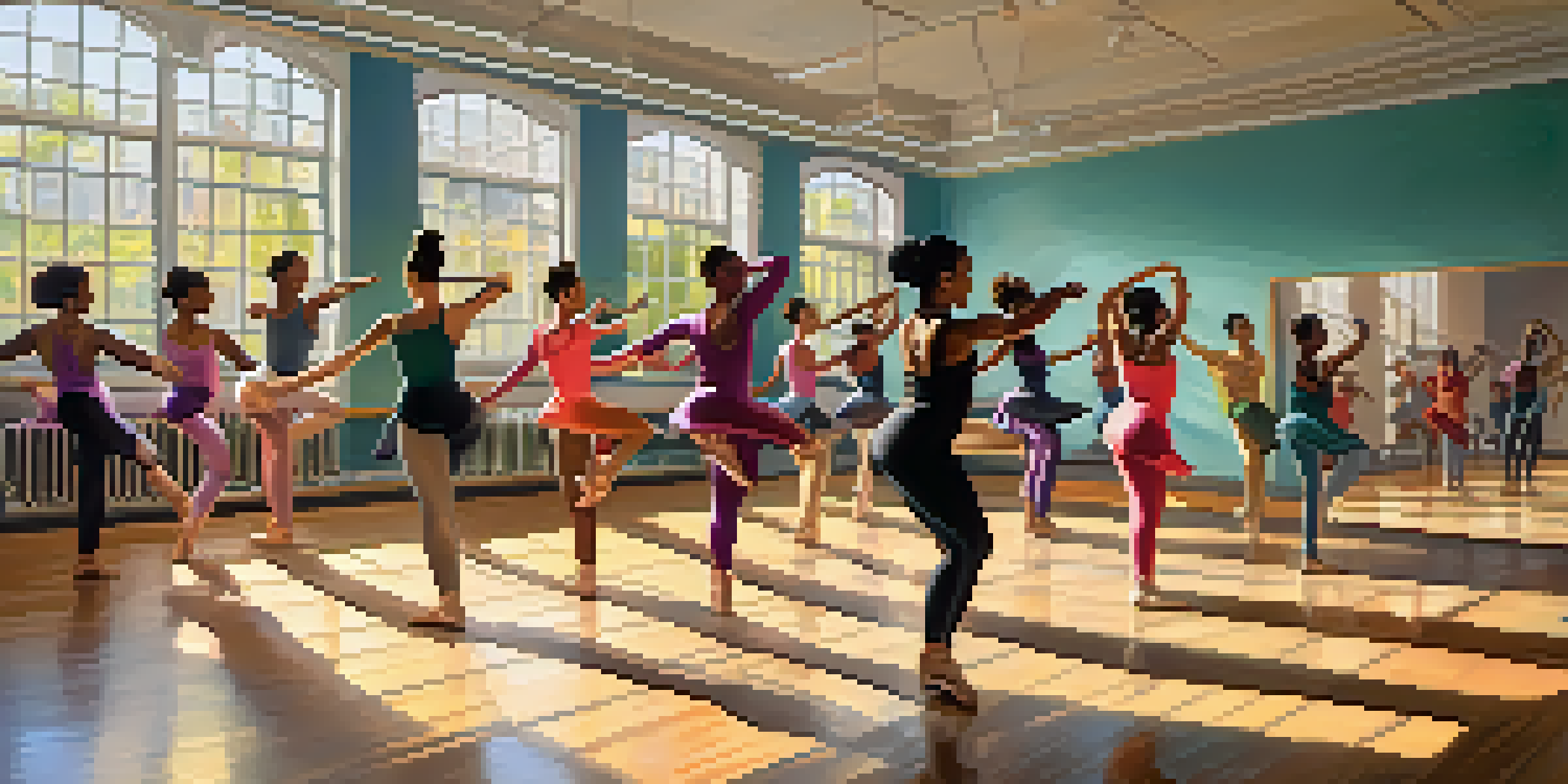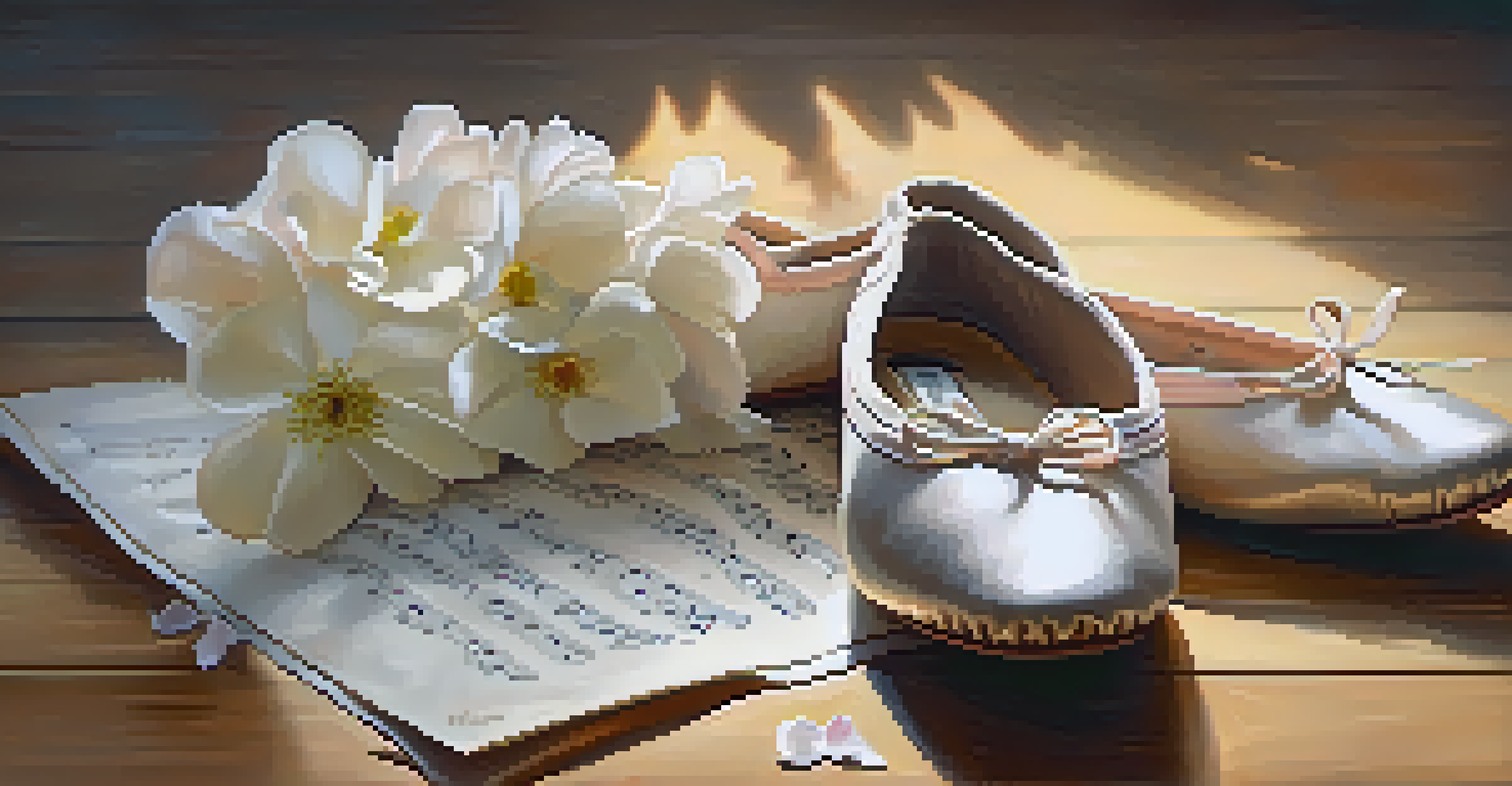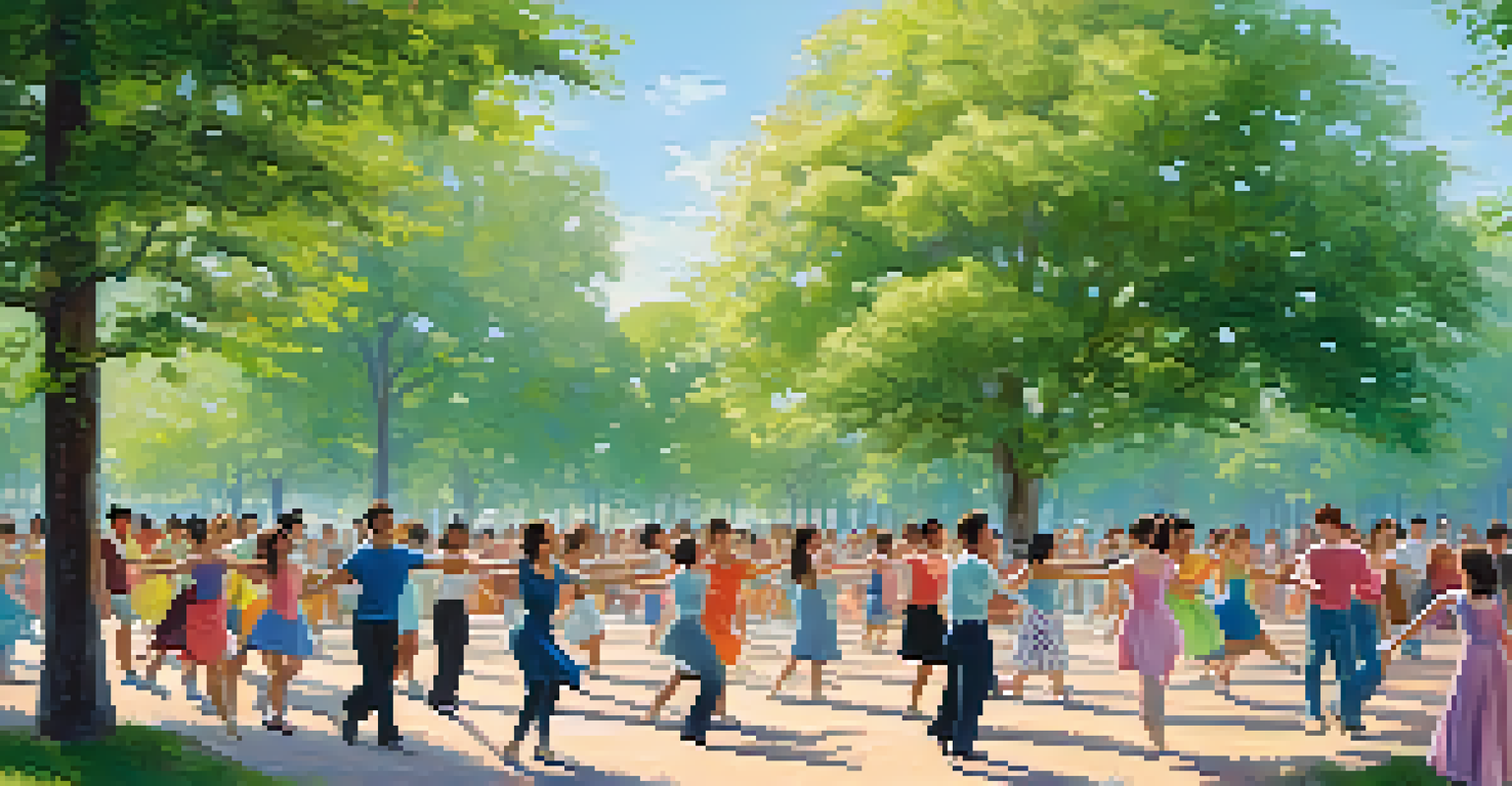The Impact of Dance Styles on Memory and Learning Outcomes

The Connection Between Dance and Cognitive Function
Dance has long been recognized as a form of expression, but its effects on cognitive function are profound. Engaging in dance stimulates various areas of the brain, enhancing neural connections that are crucial for memory. Studies show that learning dance routines can improve recall and cognitive flexibility, as the brain works to memorize choreography.
Dance is the hidden language of the soul.
Moreover, the rhythm and patterns in dance can reinforce memory retention. Just like music can evoke memories, the repetitive nature of dance movements helps the brain anchor information more effectively. This rhythmic engagement can make learning feel more enjoyable and less daunting.
In essence, the connection between dance and cognitive function illustrates how moving our bodies can lead to sharper, more agile minds. Whether it's a structured ballet class or a lively salsa lesson, the benefits of dance extend far beyond the dance floor.
Different Dance Styles and Their Unique Benefits
Not all dance styles are created equal when it comes to enhancing memory and learning. For example, ballet, with its emphasis on precision and technique, can improve focus and discipline. This structured approach can translate into better study habits and attention to detail in other learning environments.

On the other hand, styles like hip-hop or jazz promote creativity and improvisation. This encourages dancers to think on their feet and adapt quickly, skills that are invaluable in any learning scenario. The spontaneous nature of these dance forms fosters a more flexible mindset, allowing learners to approach challenges with confidence.
Dance Enhances Cognitive Function
Engaging in dance stimulates brain activity, improving memory and cognitive flexibility.
Each dance style offers distinct advantages, catering to different learning needs. By exploring various forms of dance, individuals can find what resonates with them, making the learning process more personalized and effective.
The Role of Social Interaction in Dance and Learning
Dance is often a social activity, and this aspect plays a crucial role in enhancing memory and learning outcomes. When people dance together, they engage in non-verbal communication, fostering a sense of community and belonging. This social interaction can reduce anxiety and create a more supportive learning environment.
Dancing is like dreaming with your feet.
Participating in group dance classes not only builds teamwork skills but also boosts confidence. When learners feel encouraged and supported, they are more likely to take risks and embrace new challenges. This positive reinforcement can lead to better retention of information and skills.
Ultimately, the social component of dance underscores the importance of collaboration in learning. Whether through partner dances or group performances, the connections made on the dance floor can significantly impact cognitive development.
Physical Movement and Its Impact on Memory Retention
The physical movement involved in dance plays a vital role in memory retention. When we move our bodies, we activate various sensory pathways, which can help embed information in our minds more deeply. This kinesthetic learning approach is particularly beneficial for those who struggle with traditional study methods.
For instance, practicing dance steps while reciting information can create a multisensory experience. This combination reinforces memory through physical action, making it easier to recall the learned material later. It’s like associating a song with a specific movement, helping to solidify memories.
Social Interaction Boosts Learning
Participating in dance fosters community and reduces anxiety, which enhances learning outcomes.
In this way, dance serves as a powerful tool for enhancing learning. By integrating movement into study routines, learners can improve their retention and recall, making education a more dynamic experience.
Dance as a Stress Reliever and Its Learning Benefits
Dance is not only a joyful expression but also a fantastic stress reliever. Physical activity releases endorphins, which can enhance mood and reduce anxiety. When stress levels are lowered, learners are more likely to absorb and retain information effectively.
Additionally, engaging in dance can serve as a mental break from rigorous studying. This refreshing change of pace can help clear the mind, allowing for improved focus when returning to academic tasks. A short dance session can recharge batteries and promote a more conducive learning atmosphere.
By incorporating dance into their routines, learners can create a balanced approach to education that prioritizes mental well-being. This holistic method can lead to better academic outcomes and a greater love for learning.
Cultural Perspectives on Dance and Learning
Dance is deeply rooted in culture, and different cultures have unique styles that can enrich the learning experience. Understanding these cultural contexts can enhance appreciation for dance while also fostering a sense of global awareness. Learning traditional dances can provide insights into history and social practices, broadening one's educational horizons.
Moreover, exposure to diverse dance forms encourages adaptability and open-mindedness. Learners who engage with various cultural dances can develop a greater understanding of different perspectives, which can be crucial in today's interconnected world. This cultural enrichment can enhance critical thinking and creativity.
Cultural Dance Enriches Education
Exploring diverse dance styles broadens educational perspectives and promotes critical thinking.
In essence, cultural perspectives on dance add an enriching layer to the learning process. This exploration not only fosters appreciation for diversity but also enhances cognitive flexibility, making learners more well-rounded individuals.
Integrating Dance into Educational Settings
Integrating dance into educational settings can be a game-changer for both students and teachers. Schools that incorporate dance into their curriculum often see increased engagement and enthusiasm among students. Dance can be used as a fun tool to teach subjects such as math and history, making learning more interactive and memorable.
For example, using dance to teach patterns can help students grasp mathematical concepts more easily. Similarly, historical dances can bring past events to life, making them more relatable and understandable. This innovative approach can cater to various learning styles, ensuring that all students have the opportunity to thrive.

Ultimately, the integration of dance in education not only enhances memory and learning outcomes but also promotes a love for lifelong learning. By embracing movement as a fundamental part of education, we can create more dynamic and effective learning environments.
Final Thoughts: The Lasting Impact of Dance on Learning
The impact of dance on memory and learning outcomes is both profound and multifaceted. From enhancing cognitive function to fostering social connections, dance serves as a powerful tool for personal and academic growth. As we continue to explore the benefits of dance, it's clear that movement is an integral part of the learning process.
Encouraging individuals to engage with various dance styles can pave the way for improved memory retention and learning outcomes. Whether through formal classes or simply dancing at home, the act of moving our bodies can lead to significant cognitive benefits.
In conclusion, embracing dance as a component of learning can transform educational experiences. By recognizing and harnessing the power of dance, we can help individuals unlock their full potential and foster a lifelong love for learning.